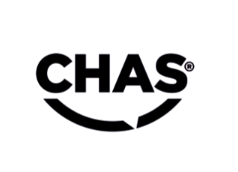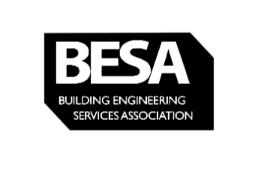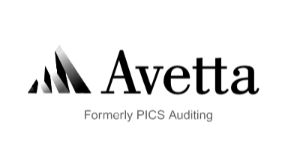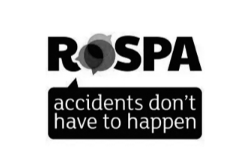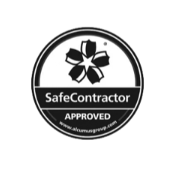Impact and Benefits of Spring Office Cleaning
Health and Safety Benefits
A thorough spring clean significantly reduces workplace health hazards. According to the Health and Safety Executive's November 2024 workplace assessment data, offices with comprehensive cleaning programmes experience 23% fewer reported respiratory complaints and 18% fewer cases of skin irritation compared to those with basic cleaning protocols. Deep cleaning removes accumulated allergens, dust mites, and microbial growth that regular cleaning might miss—particularly from ventilation systems, carpeting, and soft furnishings.
The COVID-19 pandemic permanently heightened awareness of infection control, with 87% of UK office workers now reporting concerns about workplace hygiene according to the Workplace Hygiene Barometer 2024. Professional deep cleaning services employ hospital-grade disinfection techniques to sanitise high-touch surfaces like door handles, lift buttons, and shared equipment—substantially reducing transmission risks for seasonal illnesses and other communicable diseases. Understanding best workplace hygiene practices has become essential for every organisation.
Employee Productivity Impacts
Clean workspaces directly influence performance. Research published in the Journal of Occupational Health Psychology in October 2024 demonstrated that employees working in thoroughly cleaned environments report 15% higher concentration levels and 22% greater job satisfaction. Reduced indoor air pollutants following deep cleaning correlate with a measurable 7% decrease in cognitive errors and a 9% increase in task completion rates.
The physical benefits extend to psychological wellbeing, with 76% of employees reporting that returning to a freshly cleaned workspace creates positive emotional responses including reduced stress and increased motivation. These mental health benefits translate to reduced absenteeism, with comprehensive cleaning programmes associated with up to three fewer sick days per employee annually. Improved indoor air quality plays a particularly significant role in these productivity gains.
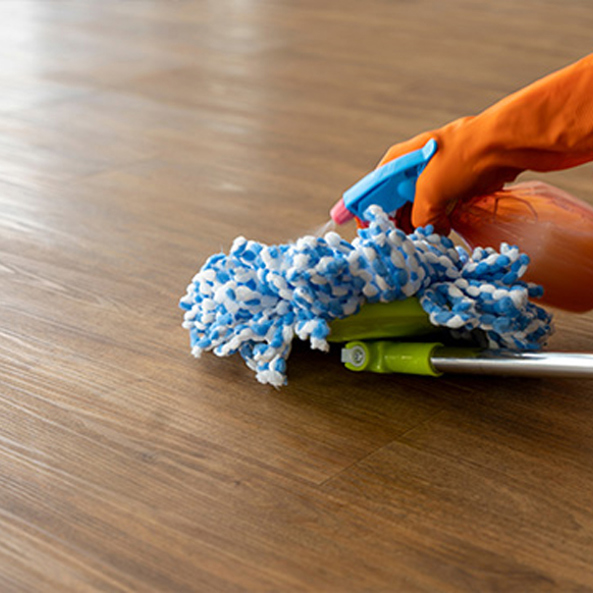
Professional Image Considerations
Your office environment makes a powerful first impression. Recent client perception studies from November 2024 reveal that 64% of potential clients form judgments about a company's professionalism and attention to detail based on workplace cleanliness within the first 60 seconds of entering the premises. Immaculate exteriors, spotless reception areas, and fresh-smelling interiors create an immediate positive impression that influences business relationships.
Beyond client perception, a visibly clean environment enhances brand perception among employees. Companies that invest in comprehensive cleaning programmes report 31% stronger employee brand advocacy and 27% higher ratings in workplace satisfaction surveys, according to research from Leesman Index. This perception advantage extends to recruitment, with candidates increasingly evaluating workplace conditions as part of their employment decisions.
Here’s the Checklist:
Implementing an effective spring cleaning programme requires systematic approach to ensure no area is overlooked. The following checklist breaks down essential cleaning tasks by category, helping facility managers and office administrators create a comprehensive plan that addresses every aspect of workplace cleanliness—from individual workstations to building exteriors and waste management practices. By methodically working through these tasks, you'll transform your workspace while establishing improved baseline standards for your ongoing cleaning programme.
Indoor Cleaning Essentials
Workstation Cleaning
● Sanitise telephones, keyboards, mice, and other high-touch equipment
● Clean monitor screens with appropriate screen cleaner
● Remove items from desk surfaces and disinfect completely
● Vacuum chair upholstery and treat with fabric sanitiser
● Empty and clean desk drawers, disinfecting handles
● Cable management cleaning and reorganisation
● Document sorting and confidential waste separation
For electronic equipment, specialised computer cleaning services ensure proper sanitisation without damaging sensitive components.
Communal Areas
● Vacuum and deep clean all soft furnishings
● Dust and disinfect all horizontal surfaces, including picture frames and decorative items
● Clean light fixtures, removing accumulated dust
● Sanitise door handles, light switches, and other high-touch points
● Deep clean flooring appropriate to surface type (carpet extraction, hard floor scrubbing)
● Clean air vents and replace filters where necessary
● Window cleaning inside and out, including frames and sills
Areas with high traffic volumes benefit significantly from professional floor cleaning using specialised equipment and techniques appropriate to each surface type. Understanding the right floor cleaning methods for different materials ensures optimal results without damage.
Kitchen and Break Rooms
● Deep clean refrigerators, disposing of expired items
● Descale and sanitise coffee machines and kettles
● Deep clean microwaves inside and out, including plate mechanisms
● Run cleaning cycles on dishwashers with descaler
● Pull out appliances to clean behind and underneath
● Degrease and disinfect all countertops and cabinets
● Clean dining furniture, including chair legs and table undersides
● Sanitise water dispensers and ice machines
Food preparation areas require particular attention to prevent bacterial growth. Professional kitchen deep cleaning addresses hidden areas often missed in daily maintenance, including extraction systems, drainage points, and appliance interiors.
Carpet and Upholstery Care
● Professional hot water extraction for all carpeted areas
● Spot treatment for stains and high-traffic pathways
● Deep clean upholstered office chairs and waiting area seating
● Treat fabrics with appropriate protectants after cleaning
● Apply antimicrobial treatments to prevent bacteria growth
● Address carpet edges and corners often missed in regular vacuuming
● Consider specialist cleaning for delicate fabrics or heritage furnishings
Power Washing Applications
Building Exteriors
● Clean building façade appropriate to material (stone, brick, cladding)
● Remove biological growth like algae and moss from exterior walls
● Clean and unblock guttering and downpipes
● Power wash building signage and lighting fixtures
● Clean exterior windows, frames and sills
● Remove graffiti and environmental staining
● Apply protective treatments appropriate to surface materials
Understanding the differences between pressure washing, jet washing, and power washing helps select the appropriate technique for each exterior surface. Professional pressure washing services utilise equipment calibrated to specific surface materials, preventing damage while achieving optimal cleaning results.
Parking Areas and Walkways
● Pressure wash concrete or tarmac parking areas
● Clean parking line markings and signage
● Remove oil stains and automotive fluid spills
● Clear debris from drainage channels
● Clean pedestrian walkways and entrance matting
● Pressure wash steps and safety markings
● Sanitise bicycle storage facilities and smoking shelters
For entrance areas, permanent fitted entrance mats provide ongoing protection against tracked-in contaminants, while proper maintenance of exterior walkways using appropriate anti-slip treatments helps prevent accidents in wet conditions.
Outdoor Furniture and Fixtures
● Clean outdoor seating areas and furniture
● Pressure wash bin storage areas and sanitise containers
● Clean outdoor lighting fixtures and CCTV equipment
● Pressure wash awnings and covered areas
● Clean staff break areas and outdoor dining spaces
● Sanitise handrails and outdoor touch points
● Clean exterior HVAC equipment and service areas
Equipment Specifications and Best Practices
● Select appropriate pressure settings for different surfaces
● Use hot water washing for stubborn grime and biological matter
● Apply environmentally approved detergents for specific contaminants
● Implement capture and filtration for waste water where required
● Schedule exterior cleaning during minimal occupancy periods
● Follow appropriate safety procedures including PPE and exclusion zones
● Conduct pre-cleaning inspections to identify fragile materials
Waste Disposal Considerations
Audit and Decluttering
● Conduct waste audit to identify improvement opportunities
● Organise document purging days with secure shredding services
● Clear obsolete equipment and furniture from storage areas
● Identify surplus supplies and equipment for redistribution
● Remove accumulated personal items after staff notification
● Clear out kitchen cupboards and storage facilities
● Document disposal in accordance with retention policies
Understanding the waste hierarchy helps organisations prioritise waste reduction strategies over disposal, supporting both environmental objectives and operational efficiency.
Recycling Opportunities
● Review and improve recycling station placement and signage
● Ensure separate collection for paper, plastic, glass, and metal
● Establish battery and small electronics recycling points
● Arrange specialist recycling for printer cartridges and toners
● Set up collection for compostable kitchen waste
● Implement furniture and equipment refurbishment programmes
● Create clear guidelines on recyclable materials specific to your waste collector
Confidential Document Disposal
● Secure shredding services for sensitive documentation
● Certificate of destruction for compliance requirements
● Clear old filing systems and archive storage
● Implement cross-cut shredding for highest security
● Conduct secure destruction of digital storage media
● Review document retention policies and schedules
● Train staff on confidential waste separation procedures
For sensitive materials, understanding hazardous waste regulations ensures compliance with legal requirements while protecting confidential information.
Electronic Waste Management
● Arrange WEEE-compliant disposal of electronic equipment
● Data sanitisation certification for IT equipment
● Recycle or refurbish obsolete computers and peripherals
● Proper disposal of batteries and power supplies
● Specialist handling of display equipment containing hazardous components
● Evaluate equipment donation programmes for serviceable items
● Implement e-waste collection points for small devices and cables
Deep Cleaning Services to Consider
Specialist Cleaning Needs
Deep cleaning specialists address contamination and soiling beyond the scope of daily maintenance. Offices with textured surfaces, intricate architectural details, or heritage features present unique cleaning challenges requiring specialist approaches. Professional deep cleaning services can safely address ornate ceilings, wood panelling, and decorative elements without causing damage. For businesses operating in listed buildings or prestigious locations, these specialist services preserve both cleanliness and architectural integrity. Regular attention to ceiling cleaning, often overlooked in standard cleaning programmes, prevents dust accumulation that affects both aesthetics and air quality.
PHS offers tailored specialist cleaning programmes designed for specific workplace environments, including periodic deep cleaning services that complement your regular maintenance schedule. Our technicians are trained in heritage building cleaning, sensitive equipment sanitisation, and challenging surface restoration.
Professional Equipment Advantages
Commercial-grade cleaning equipment delivers superior results through advanced technology and greater cleaning power. Professional power washers operating at 3000+ PSI with adjustable temperature settings remove stubborn exterior contamination impossible to address with consumer equipment. Similarly, commercial extraction machines remove up to 95% of soil from carpets, compared to the 60-70% achieved by rental equipment, according to the British Institute of Cleaning Science.
PHS's equipment fleet includes truck-mounted extraction systems, commercial-grade power washers, and advanced application technologies that deliver superior results while minimising environmental impact. Our investment in cutting-edge cleaning technology ensures our clients receive the most effective cleaning services available.
Cost-Benefit Analysis
Professional deep cleaning represents a strategic investment rather than simply an expense. According to facilities management data from RICS in November 2024, comprehensive spring cleaning programmes typically represent 0.2-0.3% of annual operating costs while delivering measurable returns through extended asset lifespans and reduced replacement costs. Carpeting receiving professional deep cleaning twice yearly lasts 30-40% longer before replacement, while properly maintained hard surfaces require less frequent restoration.
PHS offers transparent cost analysis that helps clients understand both immediate and long-term value. Our service consultations include detailed cost-benefit evaluations that demonstrate return on investment through extended asset lifespans, reduced absenteeism, and improved workplace satisfaction metrics.
Scheduling Recommendations
Effective spring cleaning requires strategic scheduling to minimise business disruption while maximising cleaning effectiveness. Phased approaches dividing the workspace into sections allow continued operations during deep cleaning programmes. For maximum efficiency, exterior power washing should be scheduled during dry weather periods with interior deep cleaning coordinated during lower occupancy periods such as weekends or holiday periods.
Annual cleaning calendars should incorporate deep cleaning at strategic intervals—typically spring and autumn for most office environments. This twice-yearly approach addresses seasonal contaminants while maintaining baseline cleanliness between intensive cleaning sessions. Critical areas like server rooms, healthcare facilities, or food preparation areas may require more frequent specialist attention.
PHS works with clients to develop customised cleaning schedules that align with business operations. Our flexible service delivery includes evening, weekend, and holiday provision to minimise disruption, with project managers coordinating complex cleaning programmes across multiple service areas and building zones.































